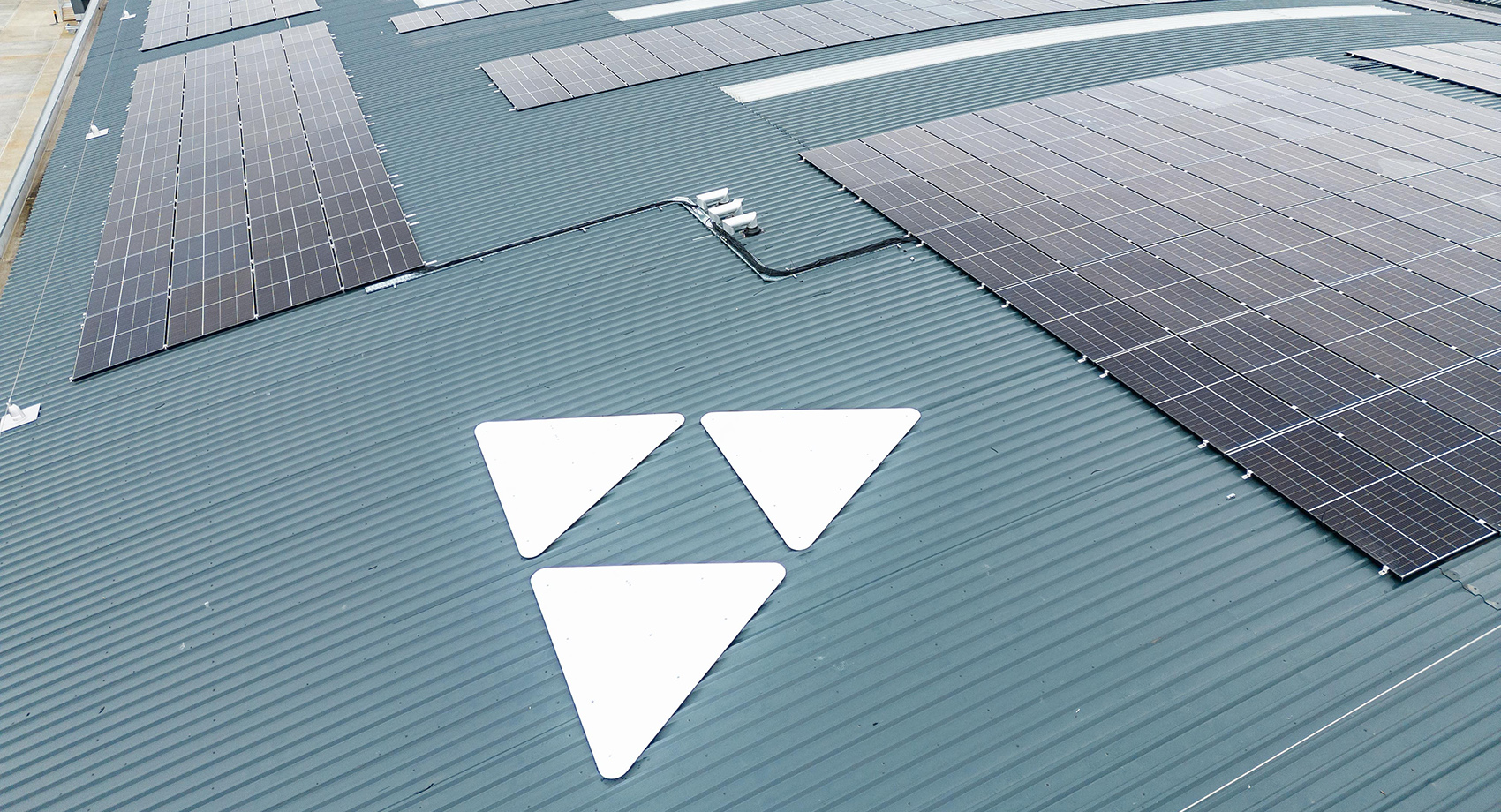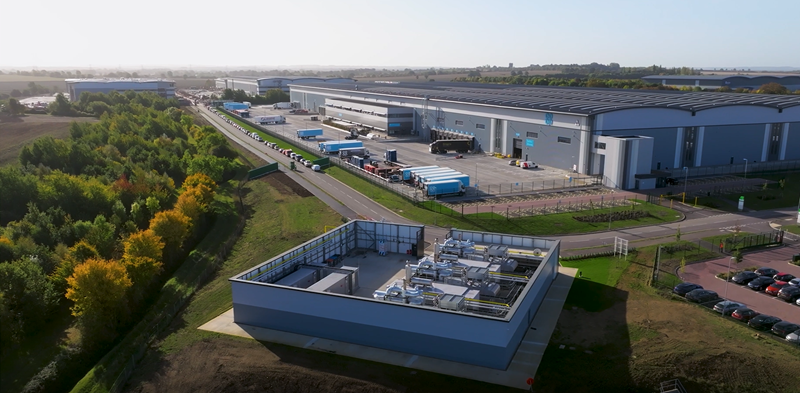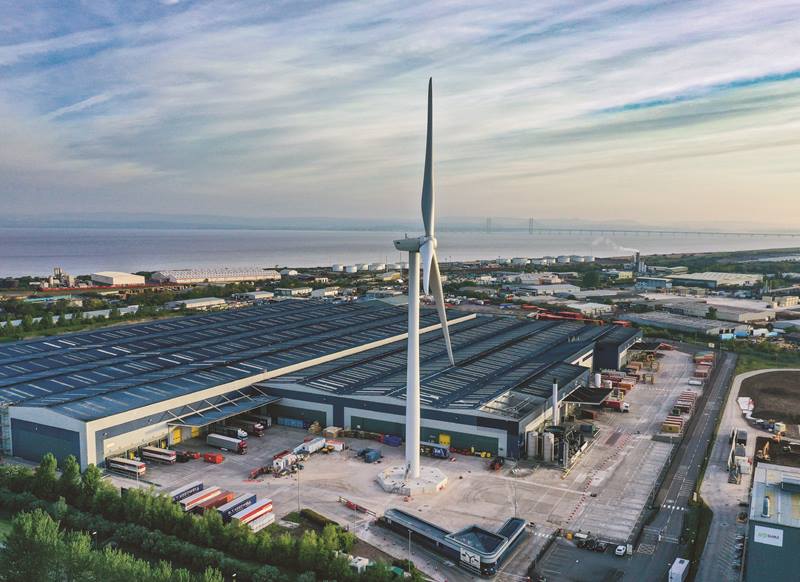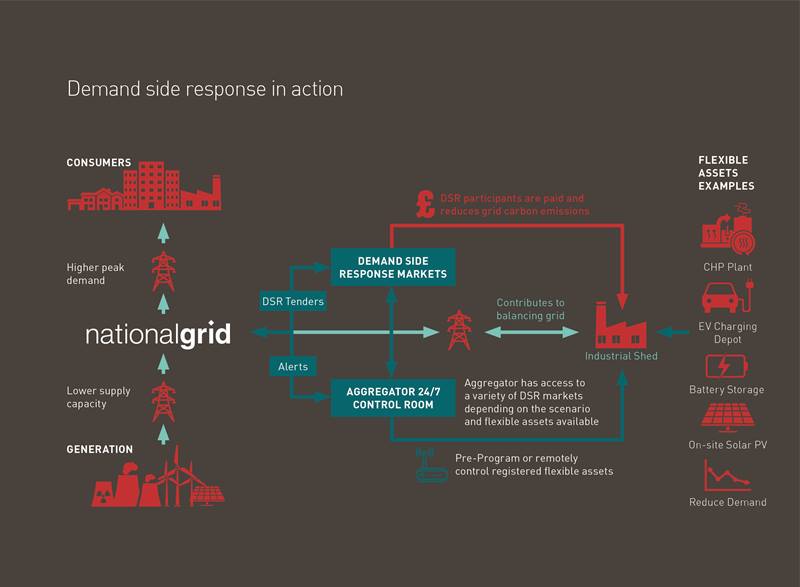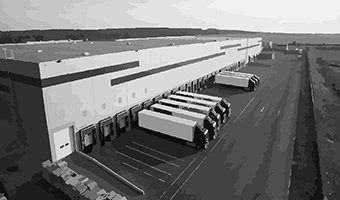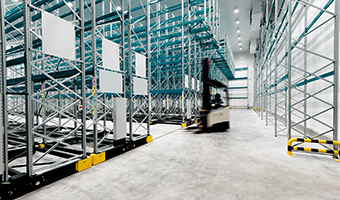TOP OF THE AGENDA
Genuine fears of widespread disruption to the UK power grid were averted as much due to luck than political action, with a relatively mild winter, high wind power generation and a healthy supply of LNG shipments arriving into the UK. However, while wholesale prices have fallen back to the levels seen prior to Russia’s invasion of Ukraine, energy prices are still three times higher than pre-pandemic levels.
The events of the past year have really underscored the importance of both minimising the risks of power disruption and the need to be better prepared for extreme energy price volatility. Alongside a corporate drive from many occupiers towards meeting sustainability/ESG goals, the recent crisis has catapulted energy security and cost exposure to the top of the businesses’ agenda more widely.
Download our Industrial & Logistics Market 2023 report →
INDUSTRIAL SCALE OPPORTUNITY
To address these challenges and contribute to net zero targets, industrial landlords and occupiers are finding innovative ways to reduce their reliance on grid consumption by installing on-site generation and optimising energy use. Due to the physical traits and locations typically associated with industrial logistics property, the sector offers huge scope to reduce energy spend. Moreover, by fully utilising all assets both behind and in front of the meter, it can even generate revenue.
Naturally, solutions and strategies around energy use are specific for each individual business, depending on the nature of its operations and the site in order to maximise return on investment. Here we put forward a number of strategies that can be readily deployed in the sector.
The CHP energy center at Tritax's Biggleswade site provides an integrated renewable energy solution for a mix of solar panels, battery storage and electric vehicle charging. Image courtesy of Tritax Big Box REIT.
- Solar PV and Power Purchase Agreements (PPA)
Industrial and logistics assets normally have an abundance of roof space compared with other asset classes, making it ideal for installing solar PV at scale. The installation can be either be sized to meet the occupier’s own demands or deployed across the maximum available surface area to put excess generated energy back into the grid to drive revenue / return on investment.
Power Purchase Agreements provide a means to install PV panels without upfront costs. Essentially, the landlord leases its roof space to the PV installer. The occupier can then consume the PV generated energy and any excess generation is exported and paid to the PV provider via PPA for an agreed fixed period (normally 10 years). After the fixed period, the PV panels are transferred to the landlord to reap the full benefits of the export payments.
- Combined Heat and Power (CHP) plants / Energy Centres
Industrial occupiers that produce excess heat in their operations, such as manufacturers, can recycle that heat into power. This can help to reduce imported energy costs and can even be exported back into the grid at specific times. CHP plants can also be an effective energy security tool that can act as a backup generator to power essential equipment and operations.
- Wind Generation via Private Wire PPA
Some industrial sites may offer scope for installation of a wind turbine which feeds directly into the industrial unit or wider estate via a private wire connection. This means that the energy generated does not attract transmission and distribution charges which normally contribute around 30-40% of the bill. However, building a private wire wind turbine via a PPA developer is a complex process with typical constraints including planning red tape, technical specification and an unwieldy long-term commercial commitment of ten years or more.
- Battery storage and electric vehicle batteries
While battery technology has come on leaps and bounds, it is still expensive to install and usually has a life cycle of around 10 years before battery degradation sets in. However, depending on the on-site operations, it could generate considerable revenues or savings by using or exporting battery usage at peak times and charging it at off-peak times or via solar PV. If the operations involve charging an EV fleet, it can also save costs by avoiding Distribution Use of Systems (DUoS) peak time bands.
The wind turbine at Tritax's asset in Avonmouth services the building. Image courtesy of Tritax Big Box REIT.
DEMAND SIDE RESPONSE MARKETS
One key strategy is to take part in the demand-side response (DSR) market. In essence, this is where businesses are financially incentivised to reduce or increase their energy use to provide flexibility to the National Grid, as and when it needs it.
Renewables are making up an ever larger part of the UK power grid’s energy mix. However, renewable energy generation is highly intermittent, and the available capacity can switch dramatically from 22GWs to 2GWs depending on levels of wind or sunshine. To balance the grid, demand-side response is activated, and gas turbine generators are utilised to plug shortfalls in capacity.
When a business takes part in demand-side response, where allowing, it will typically turn down or turn off some of key sources of energy consumption during times of high grid use. This will include lighting, air-conditioning, electric heating, pumps and other nonessential equipment.
Some companies are going even further by utilising ALL assets behind and in front of the meter to reduce demand in peak times and get paid for contributing to balancing the grid. This means fully monetising flexible assets such as PV, CHP, battery storage and operational energy through contractors that specialise in demand side response markets called aggregators.
Aggregators have access to a wide range of demand side response markets which can be stacked together depending on the circumstances and have different levels of response times depending on the energy consumption and flexible assets available. They provide a fully managed solution that can be operated 24/7 to optimise revenue opportunities.
- Frequency Response – is an ultra-fast response measure to emergency events down to the second. This is usually for sites that can shed load quickly or flexible assets that can support the grid in the event of a power station failure. The National Grid procures a mixture of weekly and monthly ahead tenders to provide both cost saving and revenue generation for applicable businesses.
- Balancing Mechanisms – is an ad hoc market with no forward commitments with dynamic pricing. Aggregators operate a 24/7/365 trading desk to optimise revenue generation by utilising flexible assets on-site.
- Short-term operating reserve (STOR) – the National Grid sources energy reserves in case of an unexpected event where participants reduce their demand considerably or contribute to energy capacity in a few minutes notice for a couple of hours. These are normally for large consuming sites or portfolios with flexible assets that can collectively be called into action when needed. Distribution Network Operator Services
- Distribution Network Operator Services – are localised balancing measures per region and are open to smaller flexible assets and sites. Can be stacked with other DSR tenders.re localised balancing measures per region and is open to smaller flexible assets and sites. Can be stacked with other DSR tenders.
- Capacity Market – is a government auction for businesses to contribute capacity to the grid in extreme stress events to prevent blackouts at a fixed price and term. It can also be stacked together with other DSR tenders.
A user of a DSR strategy could be, for example, a cold storage warehouse with solar PV and battery storage assets. When the aggregator receives a request from the national grid, it can remotely reduce the compressors to lower the power demand and discharge battery capacity via the balancing mechanism. They are paid the prevailing rate depending on wholesale market fundamentals and grid demand levels. Winter 22-23 saw some utilisation payments reach as much as £3/kWh. On this admittedly extreme basis, a sustained a reduction of 1MW for three hours could potentially generate £9,000.
FUTURE MARKETS
In addition to the above existing approaches, a number of exciting developments in the energy markets are gradually taking shape that will better promote the benefits of micro-generation among users of logistics space. While it remains early days, we can expect Peer to Peer Trading and EV to Grid technology to become more firmly established over the next decade.
- Peer to Peer Energy Trading
This approach is looking increasingly promising and may start to decentralise the energy landscape. This involves the use of blockchain technology giving access to smaller generators and businesses to directly buy and sell energy without the need for traditional suppliers as middlemen.
- Electric Vehicle to Grid (V2G) technology
With electric vehicles being rapidly adopted into the automotive market, there is a lot of untapped battery capacity which could be used to balance the grid when needed. For a business operating a large fleet of EVs, it can essentially use this as a flexible asset to export power to the grid using the DSR markets.
In summary, with intermittent renewables making up more of the fuel mix, the UK is particularly exposed to wholesale gas prices to make up the shortfall in demand. Incentivising companies to balance the grid will assist the UK to become more energy resilient, especially during times of market uncertainty and volatility. Decentralising energy generation and grid capacity can also contribute to decarbonising the grid with less reliance on gas turbine generators at times of stress.
Download our Industrial & Logistics Market 2023 report →
HOW CAN WE HELP?
With innovative technologies and markets on the horizon, the opportunities for industrial assets to reduce energy costs and generate revenue is huge when utilised and coordinated correctly. If you would like more information on renewable installations or introductions to our aggregator partners, please get in touch.
Get in touch

Email me direct
To:
REGISTER FOR UPDATES
Get the latest insight, event invites and commercial properties by email

